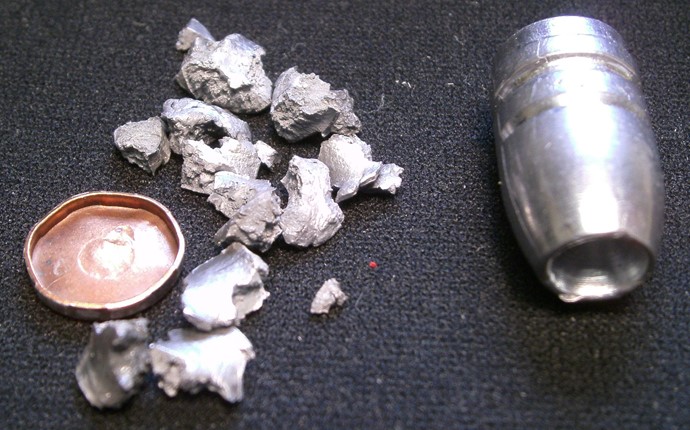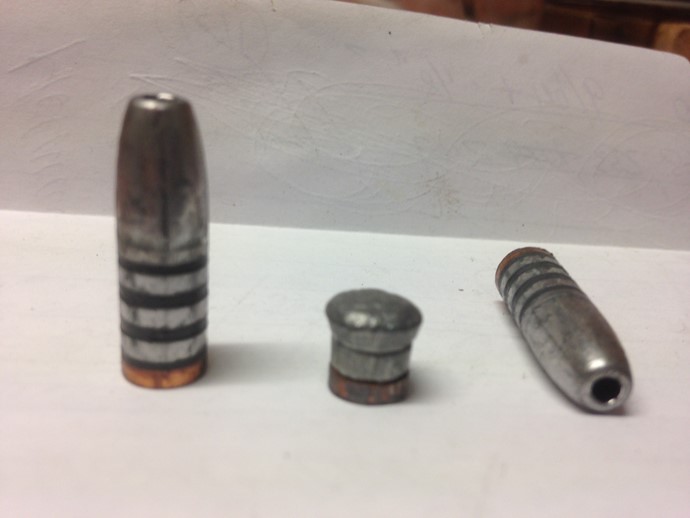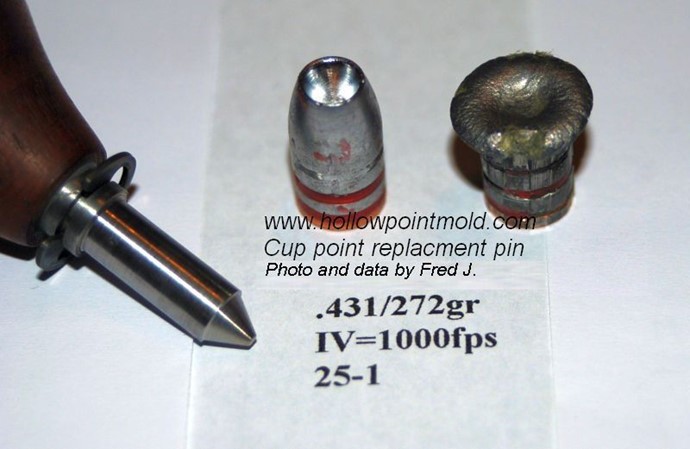A while ago I posted an image of a boar pig shot with a .30-30 hard alloy hollow point cast bullet. This was with my Savage 99 .30-30 rifle with Leupold VX1 2-7 scope. In that post I indicated that I was about to test soft alloy non HP cast bullets in the same application.
My hard cast hollow points (10% or 11% non-lead) are 176 gns with gas check and lube, and mostly I drive them at about 2200 fps with 32 gns LVR powder. The solids I've tried are 192-193 gns, about 10 gns of the difference from omitting the HP and the rest from the heavier alloy (3%-4% non-lead). The soft solids are doing 2100 fps with 31 gns LVR, and surprisingly shooting a similar sized group.
The test on pigs so far has been limited, just seven shot with the solids, as against two to three thousand with the hard HPs in this and other rifles. My impression so far is that even in nearly dead soft alloy the bullets penetrate excessively and are insufficiently destructive. They may need a small degree of hollow pointing to be effective.
I am attaching some stills from NV videos taken of pigs shot at night feeding on carcases. In all instances these indicate the point of aim in the frame immediately before the big white flash, with a description of the effect on the pig.
I apologise for the quality of the images, but the clip-on NV device requires some compromise between focusing the target and focusing the reticule. This is an experiment in posting such images.
The first three shots were at 80 meters, the last at 50. All were shot with the Oneleaf NV100 device on the back of the scope.
The first image is of a large boar, 60" from nose to butt of tail, shot with HP bullet as per the indicated aim. He dropped to the shot and flopped about a bit before going quiet.
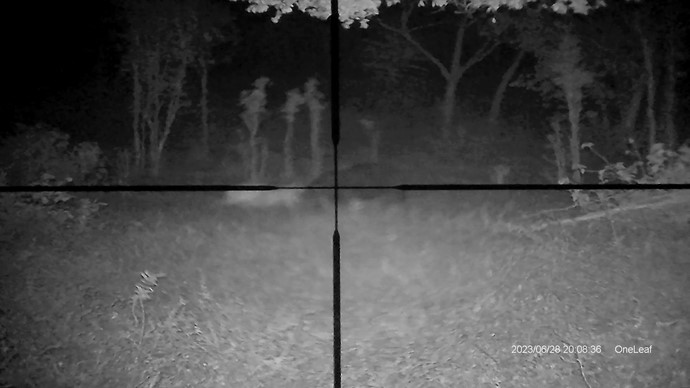
The next shot is of another smaller boar shot with a HP but with point of aim way too low. I'd call it at best a bottom of the heart shot. This one travelled 50 meters in a series of parabolic leaps before running out of steam. I suspect that a less destructive bullet would have seen this one travel much further. In this image the first pig can be seen dead beside the cow carcase, and another one in the left background, likewise shot with HP and dropped where shot.

The next image is of a boar shot with a soft solid bullet. This seemed like a well placed shot, and the pig collapsed at the shot, but within a couple of frames of the video regained his feet and made a dash of 100 meters. Shot placement is similar to the pig in the first image (HP) which went straight down. By now the (white) cow is almost obscured by dead pigs.
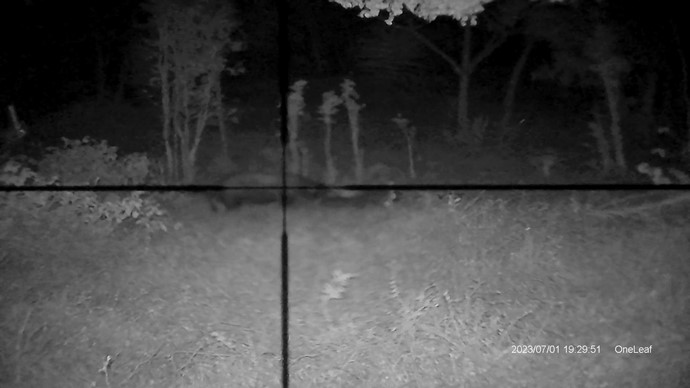
The last image is the most baffling of all, again with a solid bullet. This was at a different location. It is also the shot that has nearly cured me of taking frontal shots. The intention was to shoot the boar centrally from the front. The head was going up and down and moving around, so the final aim by chance was pretty well at the pig's right eye. The hog went straight down, with lots of kicking on the ground, but between when I took the NV illumination off him and put the torch on, he had vanished. To this day I have not found him and suspect that he might have survived. I can only surmise that the bullet deflected down the side of the head and neck and ended up in the shoulder instead of the chest cavity. I firmly believe that a hard HP bullet with some good shrapnel might have rescued this situation.
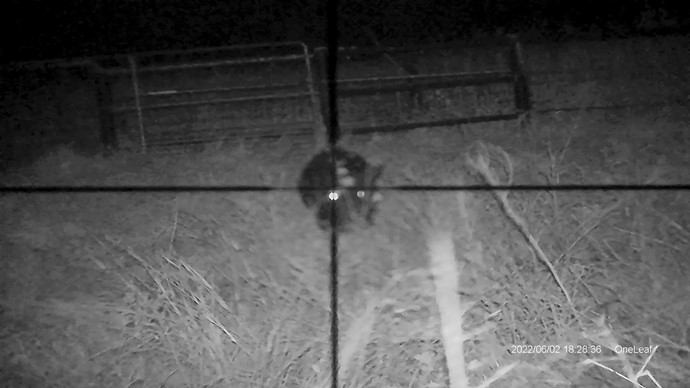
I have two more of the solids to use up, and thereafter will stick to the hard hollow point bullets.













